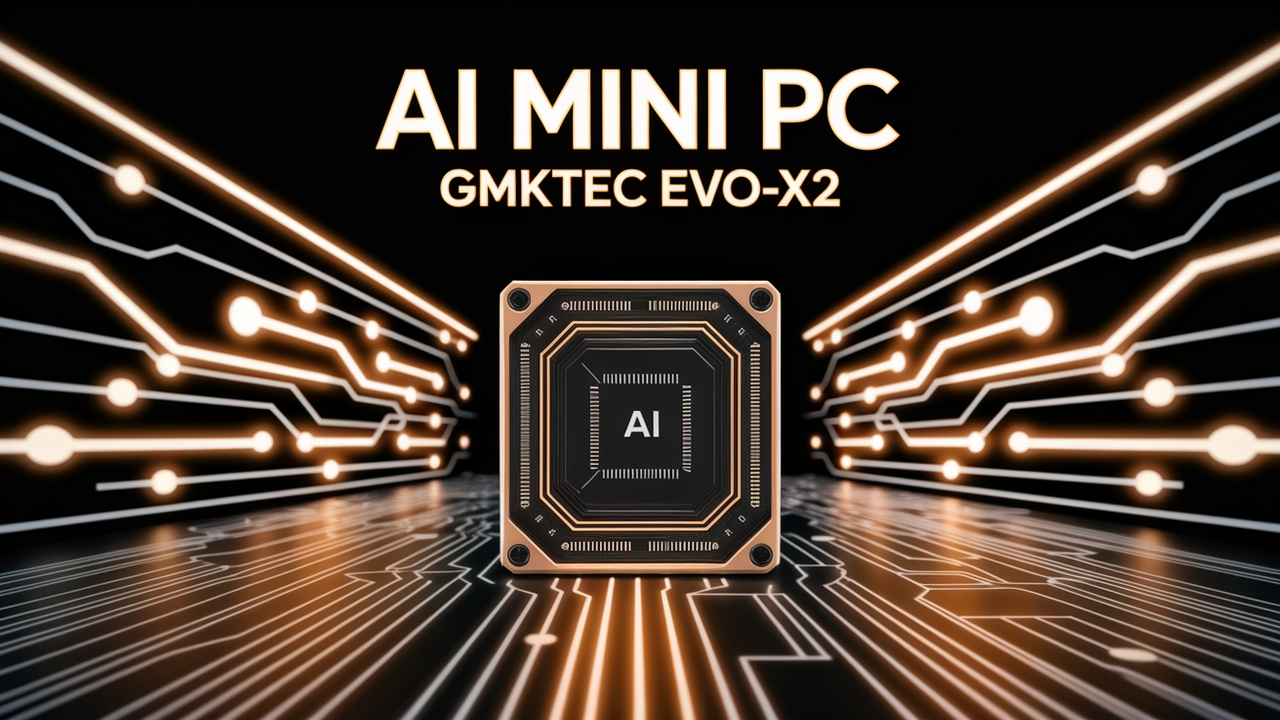Easy Peek at Ryzen AI Max+ 395 Race
SHENZHEN, China — GMKTec, a Chinese tech firm, confirmed its Ryzen AI Max+ 395 mini PC launches in May 2025, fueling a hot race for the most powerful AI mini PC.

Announced on March 10, the EVO-X2 aims to beat rivals like HP and Framework. Why? Everyone wants the top spot in AI power for tiny computers.
A Growing Tech Showdown
The mini PC world is buzzing. GMKTec’s EVO-X2 packs AMD’s Ryzen AI Max+ 395 chip, a beast with 16 Zen 5 cores and 40 RDNA 3.5 graphics units. TechRadar reported the news first, noting GMKTec’s bold claim to outshine Apple’s Mac Studio. This race kicked off big time at CES 2025, when AMD unveiled its Strix Halo lineup. Now, companies are sprinting to launch the best AI mini PC.
Mini PCs used to be simple boxes for basic tasks. Today, they’re powerhouses for gaming, AI work, and more. GMKTec’s move follows a trend—firms like Minisforum and Beelink already sell strong Ryzen AI 9 models. But the Max+ 395 promises more juice, with a 140-watt power cap and claims of beating Nvidia’s RTX 5090 in AI tasks. Posts on X show fans hyped, with some calling it a “game-changer” since March.
What Makes EVO-X2 Special?
GMKTec isn’t joking around. The EVO-X2 keeps the small size of its EVO-X1 cousin—one of the tiniest high-power mini PCs yet. It’s got Radeon 8060S graphics, perfect for 4K gaming and AI model training. Early tests by ETA Prime, a tech reviewer, showed a prototype hitting solid 1440p gaming scores. That’s a leap from older mini PCs.
AMD’s boss, Lisa Su, even signed some EVO-X2 units at a China summit this month. “This chip redefines small computing,” she said, per Tom’s Hardware. The Ryzen AI Max+ 395 also boasts 50 TOPS of AI power—ideal for pros and creators. GMKTec says it’s 2.75 times faster than Nvidia’s top GPU in AI crunching, though pricing remains a mystery.
Who’s in the Race?
It’s a crowded field. HP’s ZBook Ultra and Framework’s Desktop also use Strix Halo chips, aiming for May releases too. HP claims its mini workstation beats most laptops, while Framework brags about 128GB RAM options. GMKTec’s edge? It’s first to market with the Max+ 395, launching in China on May 15, per NotebookCheck. Others might lag to June or later.
The stakes are high. Mini PCs are hot for remote work, gaming, and AI research. China’s push to lead tech innovation helps GMKTec, backed by AMD’s early chip access. Posts on X note 10,000 pre-orders in a week—demand is real. But rivals aren’t sleeping. Minisforum’s AI370 mini PC, at $935 now, sets a price bar GMKTec must dodge or match.
Challenges and Buzz
Not all is smooth. High power needs beefy cooling—EVO-X2 might grow bigger than the EVO-X1’s tiny frame. Pricing could sting too. The EVO-X1 hit $919 with 32GB RAM; the Max+ 395 version might top $1,200, analysts guess. That’s steep for a mini PC, even a powerful one. Tech fans on X worry it’ll be “too pricey” for casual buyers.
Still, excitement rules. Blogs like VideoCardz say the EVO-X2’s 140-watt TDP and 128GB memory options make it a workstation killer. It’s not just for gamers—AI coders and video editors want in. GMKTec’s teaser poster hints at sleek looks and extra ports like Thunderbolt, keeping it versatile.
What’s Next for AI Mini PCs?
This race won’t stop here. If GMKTec nails May 2025, it could lead the pack. Success might push HP and Framework to rush their launches—or drop prices. For users, it’s a win: more power in small packages. The EVO-X2 might spark wider AI use, from home offices to studios.
Global rollout follows China, likely June. Buyers can watch GMKTec’s site for pre-orders soon. The real test? How it stacks up in real hands. If it delivers, GMKTec could redefine mini PCs. If not, rivals are ready to pounce. Stay tuned—this race is just heating up.